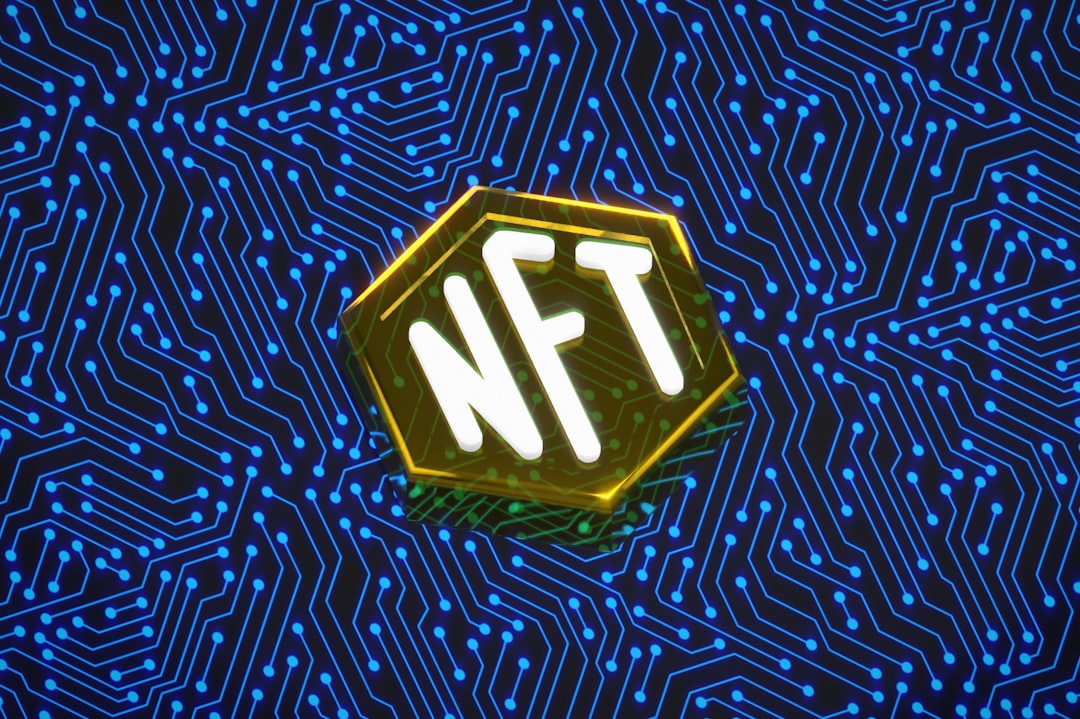Mastering NFT Diversification, a Modern Investment Strategy

In the dynamic world of digital assets, non‑fungible tokens (NFTs) have evolved from niche collectibles to a legitimate component of modern investment portfolios. The volatility that once seemed unique to crypto markets is now mitigated by a growing ecosystem of artists, creators, and marketplaces that provide depth and breadth to the NFT space. For investors looking to capture upside while managing risk, a strategy that incorporates diversification across styles, mediums, and platforms can turn an unpredictable asset into a balanced addition to a broader wealth plan.
Diversification is not a new concept; it is the cornerstone of portfolio theory, famously articulated by Harry Markowitz. By spreading exposure across uncorrelated assets, investors reduce the impact of any single asset’s poor performance. In the NFT context, diversification can take many forms: mixing high‑profile collectibles with emerging digital art, pairing scarcity‑based tokens with utility‑oriented items, and balancing investments in Ethereum‑based collections with those on newer blockchains. The goal is the same as in traditional finance reduce overall portfolio volatility while preserving or enhancing expected returns.
One of the first hurdles investors face is the perception that NFTs are highly speculative and illiquid. Yet, as the market matures, liquidity pools, secondary marketplaces, and auction houses are providing more avenues for buying and selling. Diversification allows investors to mitigate this liquidity risk by not concentrating all holdings in a single marketplace or token standard. When one platform experiences a downturn or regulatory scrutiny, others may remain stable or even flourish. This cross‑market exposure is a key lever in building a resilient NFT portfolio.
Understanding the NFT Landscape
NFTs span a wide range of categories art, music, virtual real estate, in‑game items, and beyond. Each category carries its own dynamics, cultural cache, and underlying economic engine. Artists in the digital art space rely on limited editions and royalties, while virtual real estate developers build ecosystems that generate recurring revenue through rents or events. Understanding these distinctions is essential before allocating capital.
Beyond creative categories, token standards and underlying blockchains also differ. The dominant standard, ERC‑721, defines a single token per asset, while ERC‑1155 allows for both unique and semi‑fungible tokens. Meanwhile, emerging chains like Solana, Polygon, and Flow offer lower gas costs and different community support. A diversified NFT strategy should therefore consider not only artistic or utility value but also technical architecture, as network fees and speed can materially affect buying power and resale value.

Building a Diversified NFT Portfolio
A pragmatic approach starts with setting clear objectives: is the portfolio for speculative gains, income generation, or portfolio diversification? Once the purpose is defined, investors can map out asset classes, each with distinct risk–reward profiles. A common framework groups NFTs into:
- High‑profile, limited‑edition tokens – often tied to celebrities or established artists; high resale potential but also high price volatility.
- Emerging creators and micro‑collections – lower entry costs and less hype; potential for rapid upside if the creator gains traction.
- Utility and functional NFTs – such as in‑game items or membership passes; value linked to active ecosystems and recurring revenue.
- Virtual real estate – land parcels or property in metaverse platforms; long‑term appreciation driven by platform growth and development activity.
Diversifying within these classes helps smooth overall portfolio performance. For example, pairing a celebrity collection with a lesser-known artist’s series can balance the high expected return of the former against the lower risk of the latter. Similarly, allocating a portion to utility NFTs mitigates pure speculation risk, as their value often correlates with platform usage metrics.
It is also prudent to consider the tokenomics of each purchase. Some projects include royalty mechanisms that allow creators to earn a percentage of secondary sales, which can create a small, ongoing income stream for early holders. Others may offer staking or governance rights that tie token ownership to active participation, thereby anchoring price stability.
Asset Class Segmentation
A nuanced diversification strategy requires segmenting the NFT universe by both creative style and technical characteristics. For instance, within the digital art segment, investors might spread holdings across generative art, curated galleries, and AI‑generated pieces. Each sub‑segment exhibits different market drivers: generative art relies heavily on algorithmic rarity, curated galleries on editorial curation, and AI art on novelty and technological intrigue.
Similarly, technical segmentation involves choosing between Ethereum‑based ERC‑721 tokens and more cost‑efficient Solana or Polygon equivalents. While Ethereum enjoys broad recognition and a robust infrastructure, its transaction fees can erode returns for smaller positions. Diversifying across chains can reduce cost exposure and increase the ability to execute rapid trades when market conditions change.
Geographic and Platform Exposure
The NFT market is global, but certain regions dominate specific platforms. For example, OpenSea leads in the United States, while Rarible has a strong presence in Europe, and the Korean market thrives on platforms like Nifty Gateway. Allocating investments across geographic markets can hedge against region‑specific regulatory changes or economic downturns.
Platform diversification also protects against platform‑specific outages or policy shifts. If one marketplace discontinues support for a particular token standard, a diversified strategy ensures other marketplaces can still facilitate trade. Additionally, some platforms offer exclusive drops, early access, or partnership opportunities that can provide unique value propositions when included in a diversified portfolio.

Liquidity and Exit Strategies
Liquidity remains a pivotal concern for NFT investors. While high‑profile tokens often enjoy active secondary markets, lower‑profile or niche items may take longer to sell. To address this, investors should adopt a tiered liquidity plan:
- Highly liquid assets: Allocate a smaller portion of the portfolio to tokens that consistently trade in high volumes, ensuring quick exits if needed.
- Moderately liquid assets: Hold a moderate allocation in assets that trade occasionally but can be liquidated within a reasonable timeframe.
- Illiquid assets: Reserve the smallest allocation for highly speculative or long‑term holdings, recognizing that these may require patience and longer horizons.
Exit strategies also benefit from using marketplace features such as limit orders, automatic relisting, or auction mechanisms that can improve selling conditions. Some platforms allow fractional ownership, enabling investors to sell portions of a high‑value asset without losing overall exposure.
Monitoring and Rebalancing
The NFT market is characterized by rapid changes in popularity, technology, and regulatory landscapes. Continuous monitoring is therefore essential. Key metrics to track include:
- Trade volume: Sudden drops may signal market fatigue.
- Floor price trends: Declining floors can indicate waning interest.
- Creator engagement: New drops or collaborations can rejuvenate a collection’s appeal.
- Platform developments: Upgrades or policy changes can affect liquidity and costs.
Rebalancing occurs when an asset’s risk–return profile deviates significantly from the intended allocation. For example, if a high‑profile collection’s floor price drops by 30%, reducing exposure to that asset and reallocating to more resilient segments can preserve portfolio health. Rebalancing should also consider transaction costs, ensuring that the benefits outweigh the fees.
Adjustments should be systematic rather than reactive; establishing a periodic review schedule (monthly or quarterly) helps maintain discipline. Automated tools that aggregate portfolio data across multiple chains and marketplaces can streamline this process, providing real‑time dashboards and alerts.
Final Reflections
Diversifying within the NFT arena is not merely a theoretical exercise; it is a practical necessity for any serious investor. By spreading capital across different creative styles, token standards, geographic markets, and liquidity profiles, one can tame the inherent volatility of digital collectibles while still positioning for upside. The framework outlined above understanding categories, segmenting assets, balancing liquidity, and actively monitoring offers a roadmap for building a resilient NFT portfolio that complements broader investment goals.
Implementing such a strategy begins with a modest allocation, learning the nuances of each sub‑market, and gradually expanding as confidence grows. Even the most seasoned investors find value in staying alert to emerging trends, such as the rise of fractional ownership or the integration of NFTs into DeFi platforms. Ultimately, a diversified approach transforms the NFT space from a speculative playground into a sophisticated layer of a modern, diversified wealth portfolio.

Jay Green
I’m Jay, a crypto news editor diving deep into the blockchain world. I track trends, uncover stories, and simplify complex crypto movements. My goal is to make digital finance clear, engaging, and accessible for everyone following the future of money.
Discussion (8)
Join the Discussion
Your comment has been submitted for moderation.
Random Posts

Passive Income Projects Using Crypto Affiliate Programs for Huge Earning Potential
Discover how crypto affiliate programs can create recurring passive income by driving users to exchanges, wallets, and DeFi platforms. Learn to pick top partners, automate, and scale your earnings.
8 months ago

Your Ultimate Guide to Staking Tools and Real‑Time Alerts
Unlock passive crypto income with staking: learn how real time alerts, automated tools, and smart monitoring help you maximize rewards, stay ahead of yield swings, and avoid security pitfalls.
9 months ago

Navigating International Laws for Passive Income with Legal and Tax Guidance
Master passive income across borders by understanding legal structures and tax rules that prevent non, compliance, double tax, and protect your profits.
2 weeks ago

Community Voice Drives Affiliate Growth Through Dialogue
Listening to real community conversations turns affiliate marketing from a sales push into a trust based partnership, boosting traffic and conversions through authentic dialogue.
1 year ago

Mastering Support and Resistance in Technical Market Analysis
Learn how to spot pivot points and draw reliable support and resistance lines to turn market noise into clear trading signals.
8 months ago
Latest Posts

Tax Strategies for Long Term Passive Earnings
Learn how smart tax planning can boost your passive income: choose efficient vehicles, use shelters, time gains, and keep more of what you earn.
1 day ago

Passive Income Education Through Legal, Tax, and Risk Management
Turn a side hustle into lasting, hands, off wealth by mastering legal structure, tax strategy, and risk protection, the three pillars that safeguard capital and ensure steady dividends.
1 day ago

Crypto Exchange Basics for Steady Income
Build steady crypto income by defining clear goals, choosing the right exchange tools, and sticking to a disciplined strategy for consistent returns.
2 days ago

